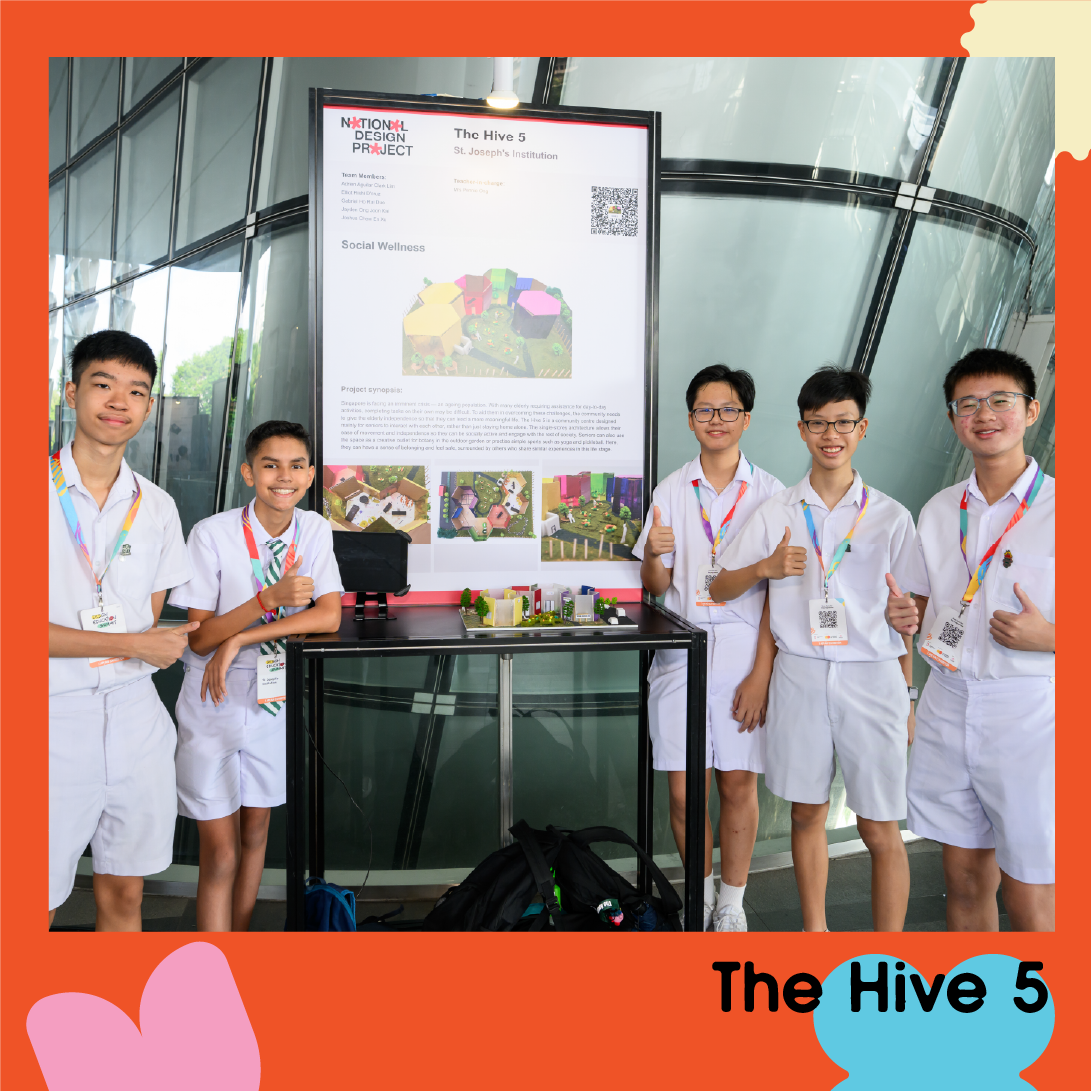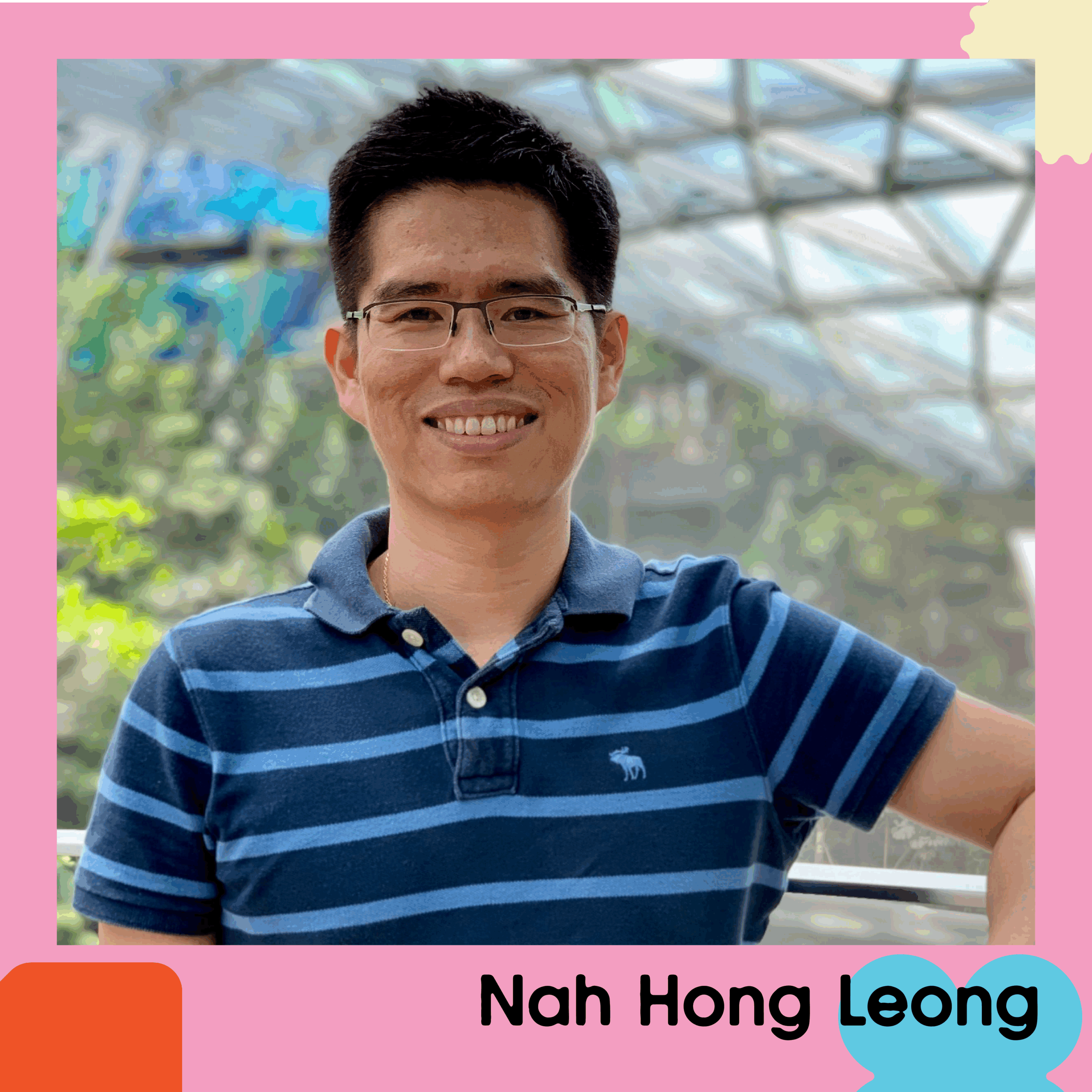The creative ally that reshaped a school’s Applied Learning Programme
When Peicai Secondary School department head Lee Li Juan realised the school’s Applied Learning Programme (ALP) needed to be revitalised, design thinking was the perfect catalyst. The whole school now benefits from creative problem solving!
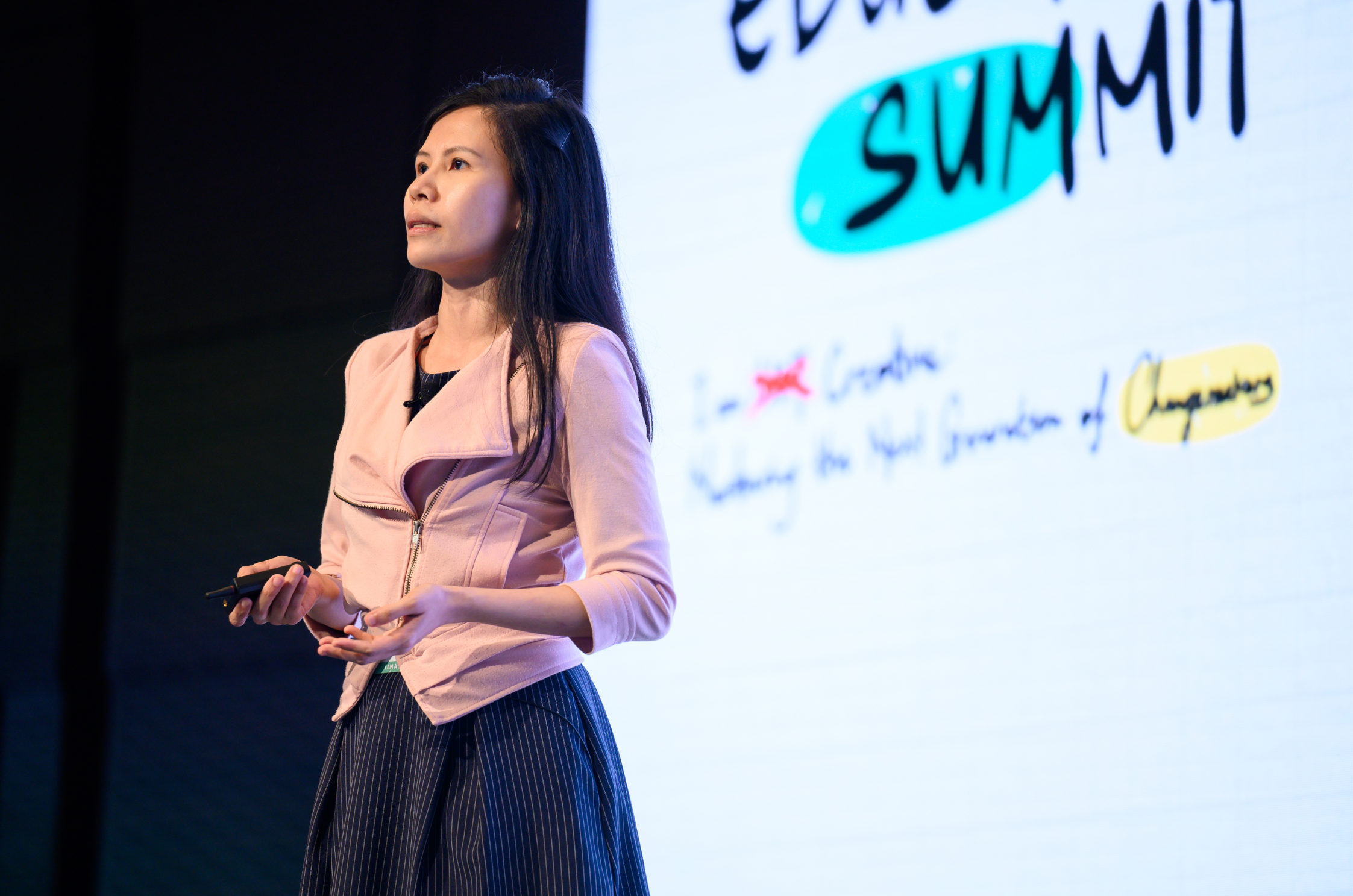
Lee Li Juan is the Head, Information and Communications Technology Department, at Peicai Secondary School. She spoke at the Design Education Summit 2023 about using design as a force for change at the school. Photo by All The Little Things Photography.
16 Jan 2025
When it comes to the development of 21st-century competencies in students, there’s no question in the minds of Lee Li Juan and her colleagues at Peicai Secondary School (PCSS) that design thinking is a crucial tool.
“In an increasingly fragile global economic order, it is imperative to equip every student with the temperament to find and create new value,” says Li Juan, who is the Head of the school’s Information and Communications Technology Department. She adds, “design thinking and the mindsets associated with it stand out as excellent tools to achieve these objectives.”
Li Juan first encountered design thinking during her own studies and past employment. She became familiar with its capacity to foster adaptive thinking, resilience, and a culture of ongoing innovation. At PCSS, she could clearly see how it would benefit both her students and the school at large. So, when it became apparent in 2022 that the school’s ALP was in need of an overhaul, it was design thinking to the rescue!
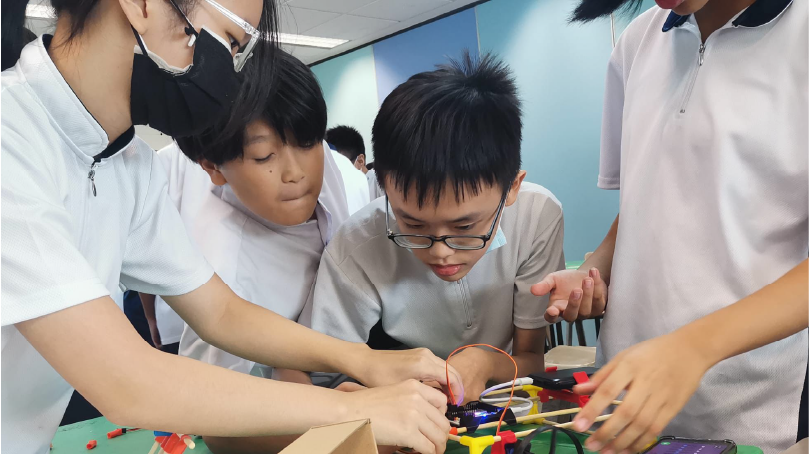
PCSS students have embraced new avenues for innovative, creative problem solving in the ALP programme since its overhaul using design thinking. Photo by Kwan-Terry Annette.
The ALP at PCSS had been running for at least three years with a focus on health and food science, but a staff shortage in the relevant departments and a shift in student interests had begun to impede the programme’s success. Something needed to change, and the Learning by Design programme ‘Design Thinking in Schools’ provided the answer.
The Singapore University of Technology and Design’s (SUTD’s) design centre, DesignZ, was a programme partner and had been looking for a school in which to pilot its design thinking initiative. The DesignSingapore Council (Dsg) connected the two parties and it was a perfect match.
They set out on a nine-month journey during which DesignZ upskilled the ALP teachers with dedicated training in design thinking. Together, they also co-created the new ALP curriculum using design thinking principles.
In keeping with those principles, empathy with the user group (Secondary 1 students) was crucial. So, a pivotal student-teacher dialogue was organised. This helped teachers to define the focus areas for the ALP programme in line with topics and issues that students felt strongly about. For PCSS students, caring for their school environment and community were key.
"Our ALP teachers recognised the relevance and alignment of design thinking in preparing our students to be future-ready, and were excited amidst uncertainty and apprehension."
Lee Li Juan
PEICAI SECONDARY SCHOOL
Teachers’ apprehensions about the new approach to teaching were eased by demonstrative design sprints hosted by DesignZ. “This immersive experience was invaluable,” explains Li Juan, “offering ALP teachers a tangible insight into design thinking facilitation.” Teachers were also given the autonomy to customise the teaching and learning materials for their own classes.

PCSS staff and Design-Z facilitators in a design thinking teacher training session. Photo by Lee Li Juan.
“The customisation approach allowed teachers to feel a sense of control over the process and helped overcome their initial uncertainty and apprehension.”
Lee Li Juan
PEICAI SECONDARY SCHOOL
Design thinking has had a tangible positive impact on both the teachers and students at PCSS. Any initial apprehensions teachers may have had were soon replaced by conviction and a bias to action!
Teachers have incorporated design thinking principles and their newly acquired skills into their daily work to enhance their teaching practices and solve problems within the school environment. They have also applied design thinking to the development of a new Teaching and Learning Framework, which has since been implemented across the school.
Much to Li Juan’s delight, several teachers even took it upon themselves to conduct a design thinking workshop for students from other cluster schools. They focused on how design thinking processes can be complemented by the use of AI tools!
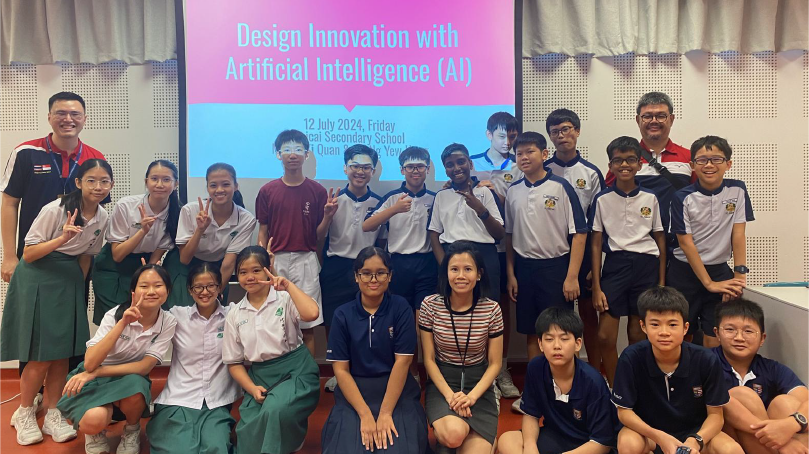
PCSS teachers Tan Yi Quan and Ng Yew Hong conceptualised and delivered a design thinking workshop with students from Bartley Secondary School, St. Gabriel's Secondary School, and Zhonghua Secondary School, focusing on how AI can be used for design thinking sprints. Li Juan (fourth from right, front row) joined the session Photo courtesy of PCSS.
Meanwhile, students have demonstrated greater empathy, teamwork, problem-solving confidence, and technical skills. They have tackled real-world challenges – for instance, developing proposals to transform spaces in the school’s library. The innovative ideas they generated contributed valuable insights to the school’s actual library transformation efforts.
"Educators observed a significant increase in student engagement during ALP. We saw a genuine shift in mindset towards design thinking principles such as empathy."
Lee Li Juan
PEICAI SECONDARY SCHOOL
The potential of design thinking to make positive change at PCSS is now also extending beyond the ALP. This year, the school is collaborating with design studio Design Exchange to participate in Dsg’s Real World Co-design Platform, tackling a challenge statement sponsored by the James Dyson Foundation, Dyson’s charity.
In this programme, design thinking will be harnessed by students, parents, and teachers to redesign the school’s pond area into a sustainable, inclusive learning environment that is multisensory, interactive, and immersive. The vision is to allow students of all abilities to explore biodiversity and geographical features while promoting environmental stewardship and eco-friendly practices.
It’s a wonderful example of how creative problem-solving can be incorporated more broadly in the school’s curriculum and with wider community engagement, for meaningful change.
Educators considering the introduction of design thinking into their curricula may wish to take a leaf out of Li Juan’s book. She shares some sage words of advice:
“I suggest dreaming big but starting small. Set a clear vision of what you hope to achieve with design thinking – whether it’s fostering creativity, enhancing problem-solving skills, or preparing students for future challenges.”
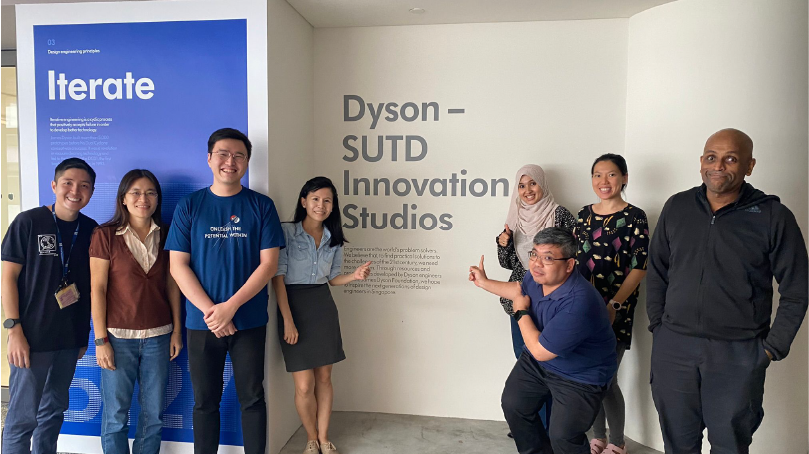
Li Juan (fourth from left) with PCSS colleagues at the Dyson-SUTD Innovation Studios on the SUTD campus. Photo by DesignZ.

